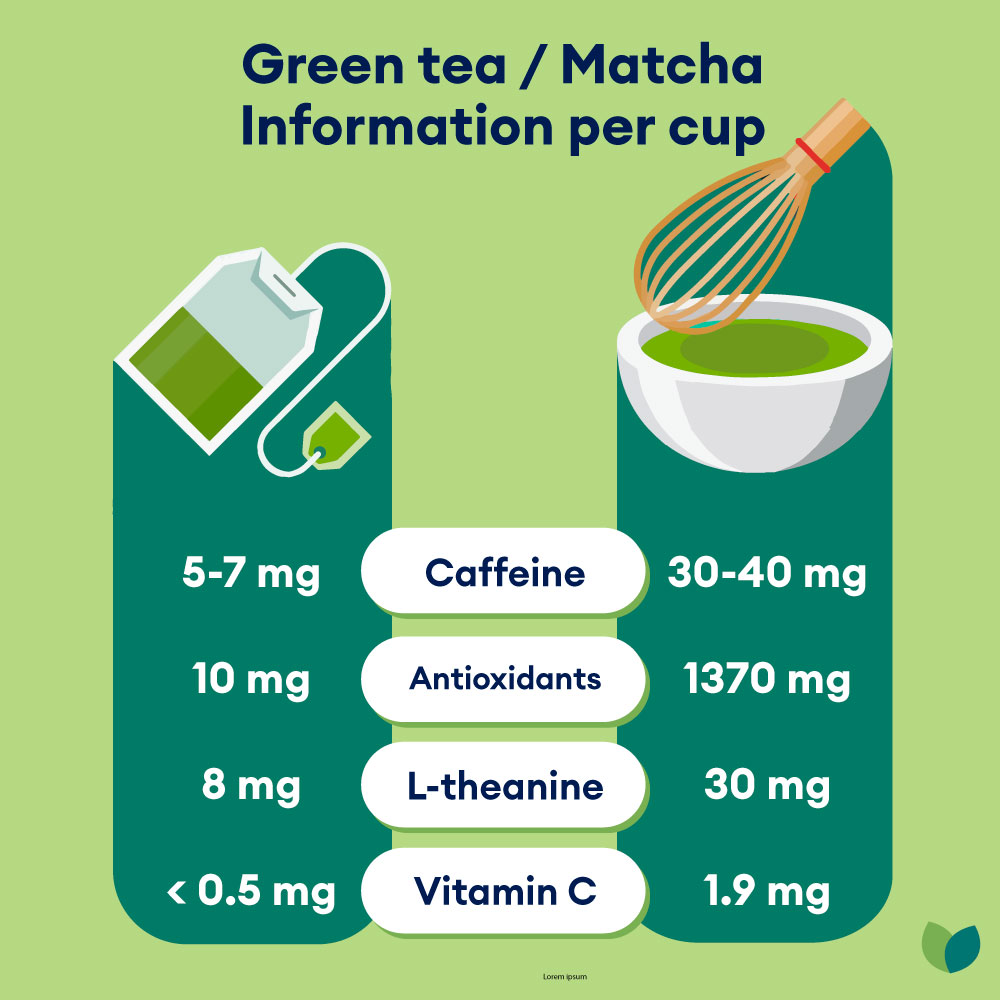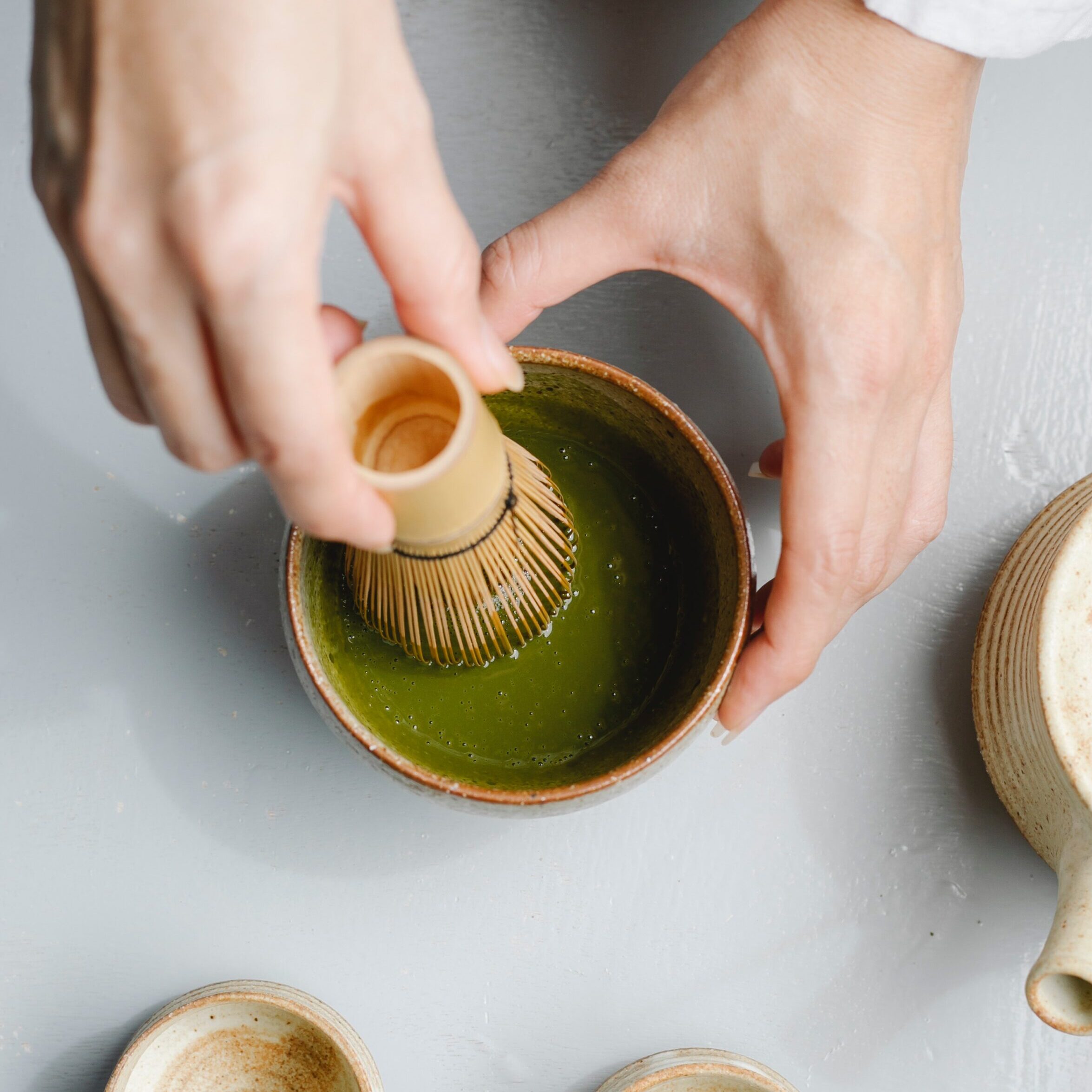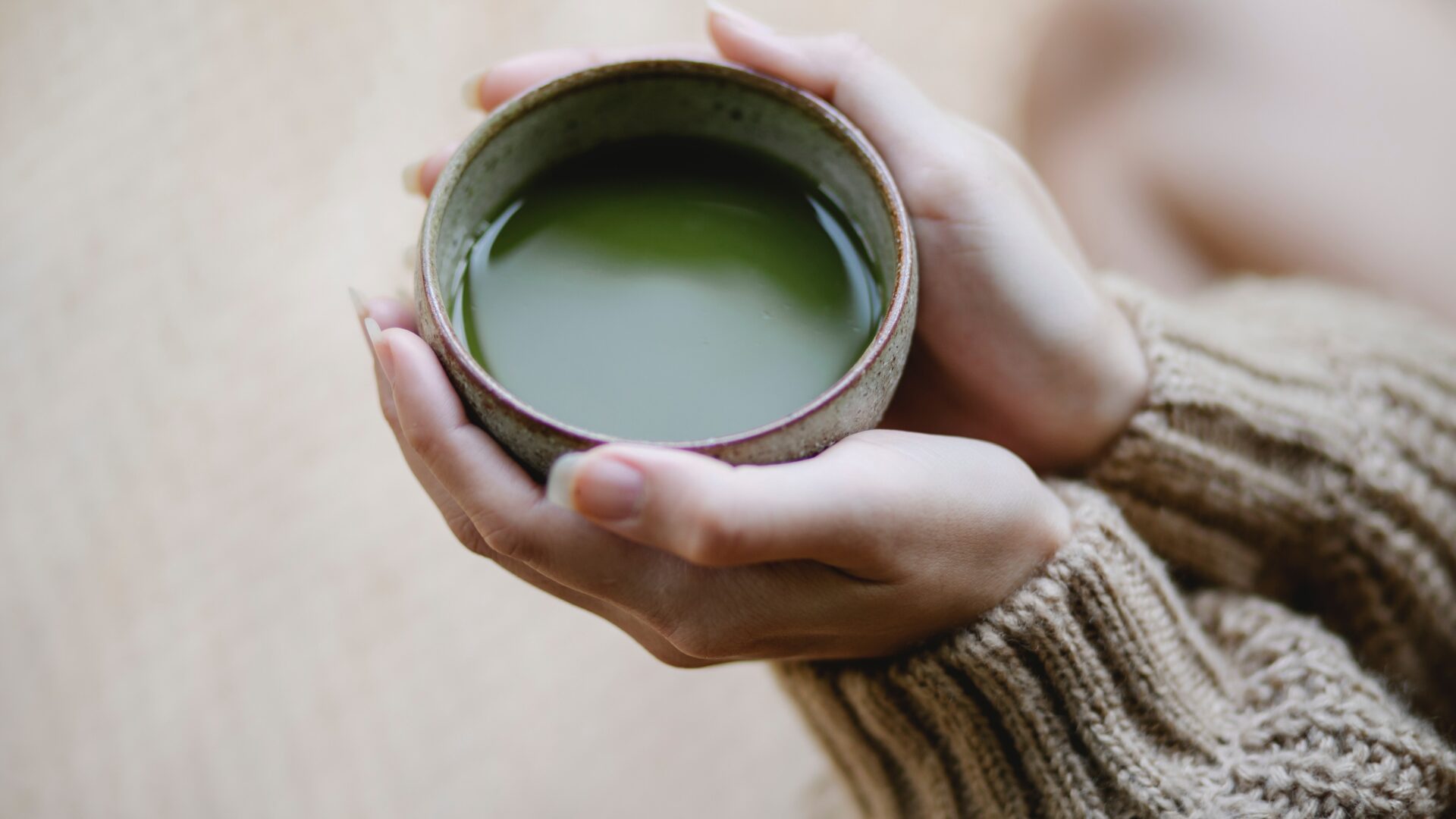Matcha tea, the bright green drink from Japan, has become increasingly popular around the world in recent years. But matcha is not just a trendy drink - it is also full of added health benefits. In this article, we will take a closer look at what makes matcha so healthy, how it is prepared as a tea or latte and what to look out for, when choosing a matcha powder. We will also show you an example of a high-quality matcha drink, which combines the benefits of green tea with other nutrient-rich green powders - for the holistic wellness factor.
What is matcha?
Matcha means “ground tea”: The name Matcha is derived from the Japanese words “ma” (ground) and “cha” (tea). This emphasises the process in which green tea leaves are ground into a fine powder. Matcha is made exclusively from Tencha tea leaves and has a strong green colour and a unique aroma due to its high catechin content. The flavour can vary from sweet and creamy to slightly bitter and grassy, depending on the quality of the matcha powder and the preparation method. This also makes matcha ideal for preparing hot and cold drinks – such as the trendy matcha latte, matcha smoothies or even mixed in morning bowls.
Why matcha tea is considered so healthy
Matcha tea is made from finely ground green tea and contains a variety of healthy nutrients, which have many benefits for the body. Here are some of the reasons why matcha is considered the perfect wellness drink:
- Rich in antioxidants: Matcha is rich in catechins, especially epigallocatechin-3-gallate (EGCG), a powerful antioxidant. Antioxidants help to neutralise harmful free radicals in the body and thus prevent cellular damage (1).
- Metabolism booster: The catechins contained in matcha can boost the metabolism. Studies have shown that matcha can therefore presumably help to burn fat (2).
- Relaxing effect: Matcha contains the amino acid L-theanine, which promotes brain function and at the same time enables relaxation without drowsiness. This can increase the ability to concentrate (3).
- Long-lasting energy and concentration: Matcha tea contains caffeine which, when combined with L-theanine, has a softer effect and also increases concentration and focus (4).

Mild caffeine in matcha
Matcha tea contains caffeine, like most teas. Unlike coffee, however, the caffeine is released slowly, so that you experience a longer, gentler energy boost. This appears to be due to the amino acid L-theanine, which has a relaxing effect on the body. The unique combination of caffeine and L-theanine in matcha therefore offers a revitalising, yet calming, treat.
Good to know: A cup of matcha contains an average of around 30 to 40 milligrams of caffeine. In comparison, a cup of coffee usually contains between 70 and 140 milligrams of caffeine.
Preparation of matcha tea
Matcha tea is very easy to prepare and basically only takes a few seconds: Simply pour hot water over the powder and stir well with a spoon until the powder has dissolved. We recommend using a maximum temperature of 70-80 °C to protect the heat-sensitive nutrients and to better preserve the particularly fine flavour of matcha at a lower water temperature.
Traditional preparation:
- 1 teaspoon matcha powder
- 200-300 ml hot water (maximum 70 °C)
- A bamboo whisk (chasen) or alternatively a milk frother
- A matcha bowl (chawan) or alternatively a tea cup
Pour the matcha powder into the matcha bowl. Many people even sieve the powder first to avoid the lumps that naturally form. Then pour in the hot water.
Matcha is traditionally whisked thoroughly with a bamboo whisk until it becomes frothy and takes on a bright green colour. As an alternative to the bamboo whisk, matcha can also be whipped with a whisk or milk frother – or you can put the drink in a shaker and give it a good shake. No matter how you prepare it, the end result is pure matcha enjoyment!

You can also spice up your matcha tea by adding other ingredients to improve the flavour and texture. Here are some options:
- Milk or plant milk: For a creamy matcha latte, you can stir milk of your choice into the finished drink
- Sweetening: A teaspoon of honey or maple syrup gives the matcha a pleasant sweetness.
- Vanilla extract: A hint of vanilla extract can give the matcha an additional flavour.
Quality makes the difference: How to recognise premium matcha
To obtain the best quality matcha, the tea bushes are shaded for around three weeks before harvesting. This results in the leaves producing more chlorophyll and the tea developing a vibrant green colour, which also reflects the high antioxidant content. This premium quality is particularly used in the Japanese tea ceremony – also known as Chanoyu or Sadō.
Only a few matcha powders are characterised by this quality class, but a good example is Matcha Ritual from Alpha Foods. What also makes this matcha powder valuable is that it contains nutrient-rich barley grass juice powder and wheat grass juice powder in addition to high-purity matcha. These juice powders not only give the matcha tea a special depth of flavour, but also enrich it with additional minerals, for which the popular green juices are particularly well known. The coconut milk powder in Matcha Ritual gives the drink a particularly creamy texture. Even when prepared with just water, the flavour and consistency is reminiscent of a delicious matcha latte.
Last but not least, matcha tea is not only a nutrient-rich drink, but also a ritual that stimulates the senses and brings a moment of calm. It is therefore worth considering choosing a high-quality product, which makes it possible to enjoy this experience in its purest form.
Frequently asked questions about matcha
The main difference between matcha and normal green tea lies in the preparation and flavour. Matcha is a finely ground powder, whereas green tea is usually made from dried leaves. With matcha, the whole leaf is consumed, which results in a more intense flavour and a higher nutrient density. Green tea, on the other hand, can be more diverse and have different flavour profiles.
Yes, matcha can also be drunk in the evening. Matcha contains caffeine, but compared to coffee, the caffeine content in matcha is lower and the tea’s L-theanine content also promotes relaxation. However, it is advisable to limit the amount and not to drink the tea immediately before going to bed. Everyone reacts differently to caffeine. If you find that even small amounts of matcha affect your sleep, it is better to avoid drinking green tea in the evening.
Yes, there are different grades of matcha. The highest quality variety is often known as “Ceremonial Grade” and is used for traditional tea ceremonies. This type of matcha has a bright green colour, a sweet taste and a fine texture. There are also ‘Culinary Grades’, which are used for making matcha lattes or for baking. These have a darker colour and a stronger flavour. The quality is influenced by factors such as cultivation, harvesting and processing.
(1) Food Chemistry: Antioxidant properties of catechins: Comparison with other antioxidants
(2) Physiology & Behavior: Green tea catechins, caffeine and body-weight regulation
(3) Food Science and Human Wellness: How does the tea L-theanine buffer stress and anxiety
(4) Nutritional Neuroscience: The combined effects of L-theanine and caffeine on cognitive performance and mood
